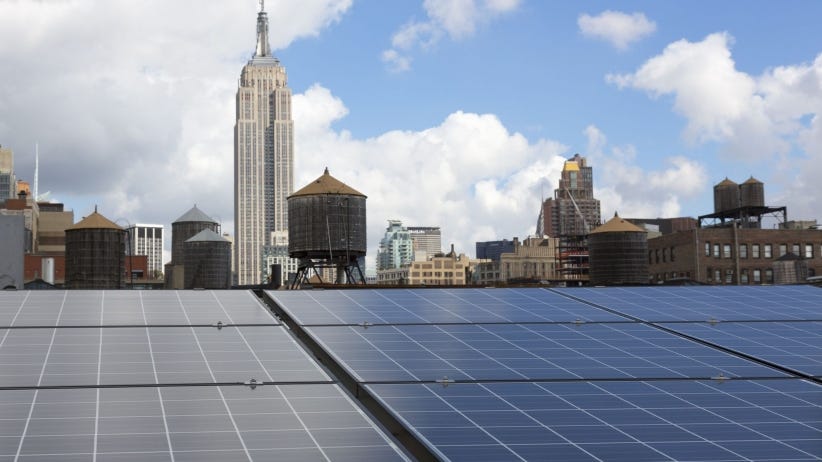
With a constant increase in demand for electric power and surging oil prices, it surprises me that more business owners aren’t excited about solar energy.
Solar power offers reduced operating costs and a higher return on investment than many other energy sources. Plus, it’s largely maintenance-free, super-reliable and good for the environment. What’s not to love? If you’re planning to integrate solar energy in your business this year, make sure you’re prepared to make the switch.
Financing options.
Putting up a solar project is a long-term investment — a truth I learned during my Atelier experience. I also honestly can say it’s been 100 percent worth it. The initial expense can be relatively high, which is why leasing would have been more favorable in the past. Setup costs have gone down significantly in the past few years, however, making solar far more affordable to the average homeowner or small-business owner.
Single-family homes account for most of New York City’s solar projects. It costs $20,000 to $50,000 to install a residential system, but a combination of city and state public programs can pick up as much as half the bill. Then there’s this: Solar-powered homes reportedly have cut monthly bills by up to 85 percent, compared to previous monthly bills. If that’s not reason enough to front the startup costs, estimates reveal solar energy’s ROI beats the stock market in more 25 states, including New York.
Installation timeline.
Ideally, the entire process shouldn’t take more than eight weeks from start to finish. However, many factors at play could delay the timeline.
A few years ago, the permit-approval process alone could take up to two years. Today, there’s better coordination among government, installers, owners and utilities. New York City’s Department of Buildings now can issue permits in a matter of a few days. It’s a welcome change from the weeks (at best) that earlier applicants waited for a decision.
Signing the paperwork officially gives your installation team the go-ahead. It’s an easy step that should take 24 hours at most — if you have the capital in hand. If you need to secure an improvement loan from a bank or other lender, you’ll wait longer.
Next, your team’s engineers gather site-specific data and create a design for your system upgrade. By now, you’re firmly into week three. Simple designs might take just a week, but owners would be wise to budget roughly three weeks for complex or large solar arrays.
Once you approve the design, you’ll need to submit a permit and wait for the Department of Buildings to greenlight your application. Things move quickly after you get the thumbs-up: You’re now clear to schedule the installation and then await inspection from the utilities department — typically a week or two after installation. The utility company changes the meter, and you’re good to go.
NYC’s permitting process.
Before you install solar panels, you’ll have to go through the City of New York’s permitting process, which begins when you file a permit. You can file this request under a New Building or Alteration permit. You also have the option to file separately as an Alteration Type-2 at borough offices or The HUB itself. The Department of Buildings will inspect the premises and use that information to help make a determination about your application’s future.
Local and state incentives.
Through NY-Sun, the State of New York offers a range of incentives to build a more affordable and sustainable solar industry in New York City. The program offers loan financing for residential, small-commercial and commercial projects. The terms vary depending on the type of borrower. Residential and small-commercial customers can finance up to $25,000 with a repayment period as long as 15 years. Commercial borrowers may finance up to 100 percent of any-sized solar projects and secure an interest rate in the range of 4 percent to 6.5 percent. As an added motivation to participate, NY-Sun also extends reduced installation costs to borrowers across all three categories.
Net-energy metering.
Net energy is the difference between the energy produced and the energy consumed. Many households use less than solar panels produce. Excess energy is pushed back into the grid. The net-metering structure credits the owner for this power returned to the overall system. As an owner, you can use the offset to cover future bills, though you’ll still need to pay the monthly connection charge for the service of using the utility’s grid.
There’s no denying the decision to switch to a solar system can be tough. Even with government support, the one-time setup fee might be too steep for some. But solar undoubtedly is taking over. New York City experienced a surge in installations during 2016. That’s on top of the substantial increase over the preceding years, when residential and commercial installationsdoubled between 2014 and 2016.
The earlier you get on board with solar, the greater benefits you’ll enjoy over the long term.
